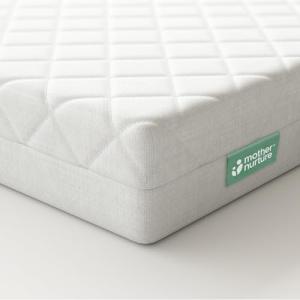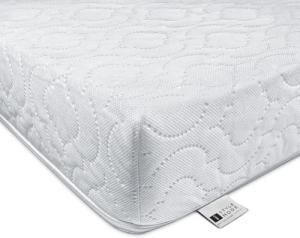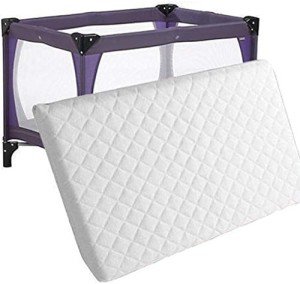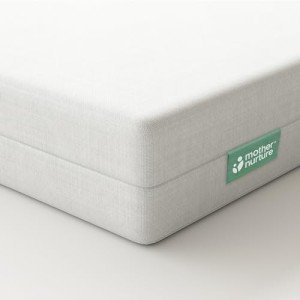The Ultimate Guide to Hypoallergenic Baby Cot Mattresses: Eco-Friendly Choices in 120x60 Cm
When it comes to creating a safe and healthy sleep environment for your baby, the choice of mattress is paramount. An increasing number of parents are turning toward hypoallergenic and eco-friendly options, especially in the standard size of 120x60 cm. This guide will explore the benefits of choosing a hypoallergenic baby cot mattress, delve into the eco-friendly aspects, and provide essential tips for selecting the perfect one for your little one.
What is a Hypoallergenic Mattress?
A hypoallergenic mattress is designed to reduce allergens that can trigger allergies or asthma in sensitive individuals. They are made from materials that are less likely to harbor dust mites, mold, and other allergens. This is particularly important for babies, whose immune systems are still developing.
Benefits of Hypoallergenic Mattresses
| Benefit | Description |
|---|---|
| Reduced Allergens | Helps minimize exposure to allergens, reducing allergy symptoms. |
| Safer Sleep Environment | Provides peace of mind for parents concerned about contamination. |
| Durable Materials | Typically made from high-quality, durable materials that last longer. |
| Eco-Friendly Options | Many hypoallergenic mattresses are also made from sustainable materials. |
Eco-Friendly Features
Eco-friendly mattresses not only prioritize your child’s health but also the health of the planet. Here are some common features of eco-friendly hypoallergenic baby cot mattresses:
- Natural Materials: Many eco-friendly mattresses are made of organic cotton, bamboo, or latex. These materials are often sourced sustainably and are biodegradable.
- Non-Toxic Chemicals: Eco-friendly mattresses are usually free from harmful chemicals like flame retardants, heavy metals, and volatile organic compounds (VOCs).
- Recyclable: At the end of their life, many of these mattresses can be recycled or composted, reducing landfill waste.
Comparison of Popular Materials
| Material | Hypoallergenic Properties | Eco-Friendliness | Durability |
|---|---|---|---|
| Organic Cotton | Naturally resistant to allergens | Grown without pesticides and chemicals | Moderate to high |
| Bamboo | Resistant to mold and bacteria | Fast-growing and sustainable source | High |
| Natural Latex | Resistant to dust mites | Harvested from rubber trees sustainably | Very high |
| Memory Foam | May retain allergens unless treated | Some eco-foam options available | High but often treated with chemicals |
Choosing the Right Mattress
Selecting the right hypoallergenic baby cot mattress can be overwhelming, but considering a few key factors can make the process easier:
-
Safety Certifications: Look for certifications such as Oeko-Tex Standard 100 and CertiPUR-US, which indicate that the mattress meets safety and environmental standards.
-
Firmness Level: Babies need a firm surface for safe sleep. Ensure that the mattress you choose has the right firmness; it should be neither too soft nor too hard.
-
Cover Material: Opt for a breathable, waterproof cover that is also hypoallergenic. This will protect the mattress while allowing ventilation.
-
Size: Make sure the mattress fits snugly in your crib. A standard size of 120x60 cm is common in many models, but always double-check the dimensions to avoid gaps.
-
Maintenance: Consider how easy it is to clean the mattress. Features such as removable, washable covers can make maintenance simpler.
Recommended Hypoallergenic Baby Cot Mattresses
| Brand | Material | Key Features | Price Range |
|---|---|---|---|
| Naturepedic | Organic Cotton | GOTS certified, waterproof, breathable | £300 - £400 |
| Borpaya | Bamboo + Natural Latex | Ultra-supportive, non-toxic, eco-friendly | £200 - £350 |
| Nook Sleep | Organic Cotton + Latex | Innovative design with breathability, machine washable cover | £400 - £500 |
| Newton Baby | Woven Air + Cotton | 100% breathable, machine washable, cool to the touch | £300 - £400 |
FAQs
1. What does hypoallergenic mean?
Hypoallergenic means that the materials used in the mattress are less likely to trigger allergic reactions, making it a safer option for those with sensitivities.
2. Can you wash a hypoallergenic mattress?
Most hypoallergenic mattresses come with removable covers that can be washed. Always check the manufacturer's guidelines for cleaning recommendations.
3. How long does a baby cot mattress last?
A high-quality mattress can last anywhere from 5 to 10 years, depending on usage and care. Regular cleaning and following care instructions can extend its lifespan.
4. Are eco-friendly mattresses worth the investment?
Yes, eco-friendly mattresses can be more expensive upfront, but they often offer better health benefits, durability, and can be more economical in the long run due to their lifespan.
5. How can I tell if my baby is allergic to their mattress?
Signs of allergies may include nasal congestion, sneezing, rashes, or difficulty sleeping. If you suspect your baby is having an allergic reaction, consult with a pediatrician.
Choosing a hypoallergenic and eco-friendly baby cot mattress is an important step in fostering a healthy sleep environment for your child. By understanding the materials, benefits, and features to look for, parents can make informed decisions that prioritize safety and care for the planet. With the recommended brands and considerations outlined in this guide, you're ready to find the perfect mattress for your little one’s cot, ensuring healthy sleep for both baby and planet. Remember, a good night’s sleep today can lead to a healthier tomorrow!






